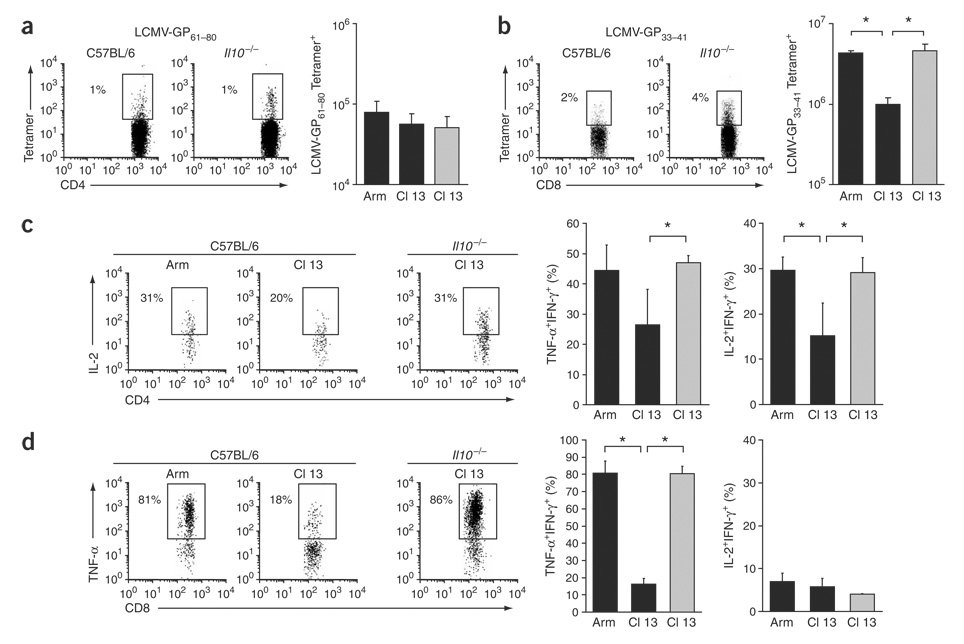Figure 5.
Rapid clearance of persistent viral infection facilitates memory T-cell development. (a) Virus-specific CD4+ T cells visualized by I-Ab GP61—80 tetramer staining on day 42 after infection as described in Figure 2a. Flow plots illustrate the frequency of tetramer-positive CD4+ T cells in C57BL/6 (left) and Il10−/− (right) mice infected with Cl 13. The bar graph illustrates the number of GP61—80 tetramer–positive cells on day 42 after Arm and Cl 13 infection of C57BL/6 mice (black) and Cl 13 infection of Il10−/− mice (gray). (b) Virus-specific CD8+ T cells visualized as in Figure 2b with H-2Db GP33–41 tetramers; the bar graph shows the number of tetramer-positive cells. *P < 0.01. (c) Cytokine production by virus-specific CD4+ T cells, assessed on day 42 after Arm or Cl 13 infection of C57BL/6 mice (black) and Cl 13 infection of IL-10–deficient mice (gray bars). Flow plots illustrate the frequency of IL-2 producing, IFN-γ+ cells. Bar graphs, TNF-α and IL-2 production by IFN-γ+ cells. Data are representative of the average ± s.d. of four mice per group. *P < 0.01. (d) The ability of CD8+ T cells to produce effector cytokines after ex vivo stimulation with GP33–41 peptide, analyzed as described in Figure 6c. Flow plots illustrate the frequency of TNF-α producing, IFN-γ+ cells. Bar graphs, TNF-α and IL-2 production by IFN-γ+ cells. *P < 0.01.

